When a pneumatic tire goes flat, a caster feels wobbly, or a creaking sound coming from your rear wheel drives you bonkers, it might be time for a replacement.
Though it may seem like a complicated task, it’s actually quite a straightforward process for most and also essential to keep your wheelchair performing in peak condition.
In this guide, we break down how to replace wheelchair wheels from start to finish. Let’s get cracking!
First, Here’s a “Wheely” Quick Overview
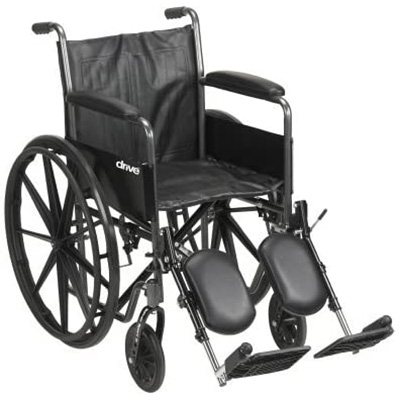
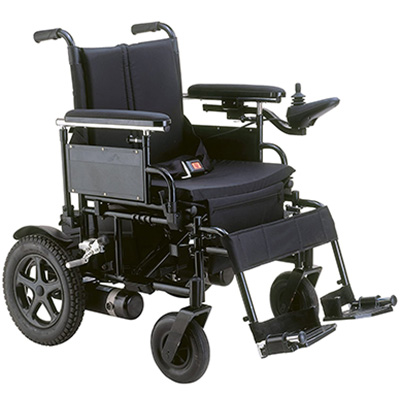
Before you break out the toolbox and start flinging bolts, let’s go over the standard wheelbase setup of a manual chair, as there are two different sets of wheels.
- The front wheels or “casters” are smaller in size and swivel in all directions to aid in maneuverability.
- The rear wheels or “drive wheels” are the larger set in the back of the chair that the user propels forward or backward via the pushrims.
It’s important to note that wheelchairs, whether electric or manual come in all different designs, materials, and sizes according to the user’s disability and lifestyle.
Therefore, sometimes the wheel configuration can be entirely different, with two sets of caster wheels or even one caster.
When Do Wheelchair Wheels Need to be Replaced?
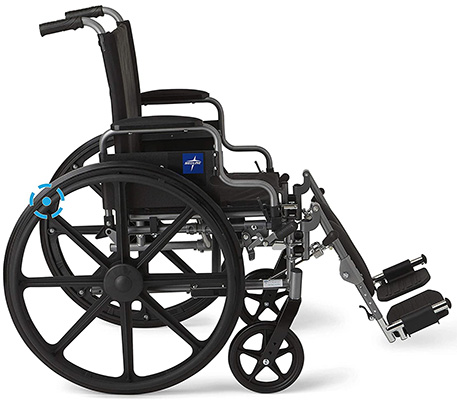
Wheelchair wheel replacement requires immediate attention. Even if your chair is gliding effortlessly, it’s worth checking out your wheels if you notice a slight decrease in performance.
After all, the wheels are the source of mobility for the user. If an issue isn’t resolved quickly, it can leave the user stranded while also increasing the risk of damages and safety.
If something feels off or it’s been a while since you’ve maintained your wheels, there are a few mechanical signs that let you know it’s time for a wheelchair tire replacement.
For the drive wheels, you’ll want to look for the following:
- Spokes that appear loose or damaged.
- If you notice that the chair pulls to the side during propulsion or doesn’t move efficiently.
- Wobbling occurs after spinning the wheels.
- If the tires are worn, flat, or the tread is gone.
For the casters, look for these signs:
- The caster doesn’t spin, especially while the chair is moving.
- If there is wobbling after the caster free spins.
- If the caster rubber is worn down and the tread is gone.
What Happens if You Don’t Replace the Wheels?
If you notice any of the signs mentioned above, it’s best to get it fixed immediately to avoid trouble down the road.
Not taking care of the issue can have detrimental effects that can end up being dangerous for the wheelchair user, increasing the risk of tipping over or falling.
Unaligned wheels can make it difficult for the user to propel, creating friction that increases stress and fatigue.
Furthermore, if the wheelbase becomes unbalanced, it triggers a negative domino effect on the other components of the wheelchair, causing additional wear and tear that might be an expensive fix later on.
Choosing the Right Size of Wheels and Tires
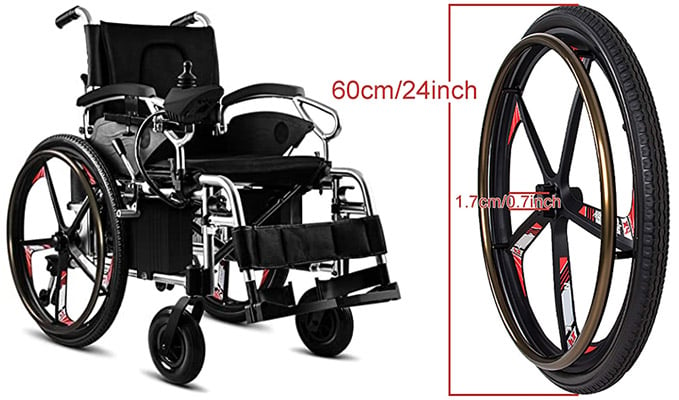
Now, one last topic to touch on before we finally go through the steps of wheelchair tire replacement is the sizing.
While wheelchair tires come in all sizes and materials, choosing the accurate size for your setup is paramount. The slightest miscalculation can affect the overall performance of the chair, leading to possible mechanical issues or discomfort for the user.
The fail-proof solution is to call up your supplier to get expert guidance on sizing, or you can reference the owner’s manual for the model number of the wheels and look up the exact size and type issued by the manufacturer.
When choosing the size, pay attention to the hub and tire width, wheel height, and the bearing inside diameter. These measurements are also worth discussing with your supplier to ensure you pick the right wheel.
Manual Wheelchair Front Wheel Replacement
You’ve noticed that your casters are making strange noises or they’re a tad too wobbly for your comfort. It’s time for a replacement. Below, we outline exactly what to do step-by-step.
1. Buying the Caster
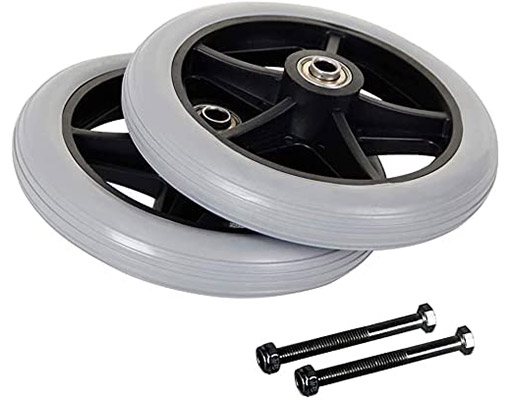
When shopping for a caster, off-market brands might catch your eye, but remember that in the wheelchair industry, the quality can be questionable. Instead, it’s always important to stick with the official parts that your manufacturer or supplier recommends.
Casters come with either a two-piece rim or a one-piece rim, so double-check your chair’s model to ensure you pick the right one.
You’ll also need to decide on the tire material that best suits your lifestyle.
Pneumatic tires have an inner tube that inflates with air. This is the most common and also the least expensive. Solid tires and rear wheels are puncture-proof and filled with urethane or polyurethane.
2. Remove the Old Caster
Once you’re all set up with your toolbox, a clear working area, and the new caster, it’s time to remove the old one.
Use a wrench and socket to loosen the bolt on the caster. Remove the bolt, washer, and caster from the wheelbase.
3. Install the New Caster
First, you’ll fit the bolt through the fork, followed by the washer. You’ll align the new caster between the forks, then add another washer, followed by the last bolt.
Position the nut and use your wrench and socket to tighten the configuration in place.
And that’s it! See how easy wheelchair caster wheel replacement is?
Replacement of Wheelchair Rear Wheels
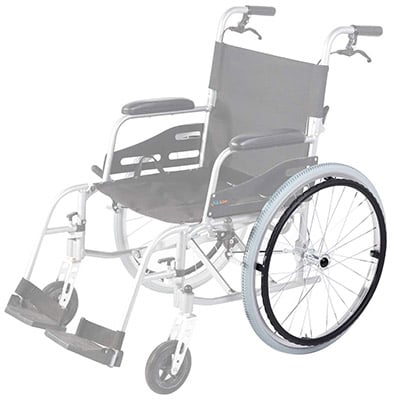
Replacement of the rear wheels is just as straightforward as the casters. All you need is your new rear wheel (we discuss how to choose the size earlier in the guide) toolbox and clear working space to get started.
1. Removing the Rear Wheel
You’ll need 1-2 wrenches, a flathead screwdriver, and a socket on either side of the wheel to remove it.
Start by placing the flathead screwdriver under the center hub to pop it off. Remove the nut, and slide out the bolt before removing the old wheel.
2. Installing the New Rear Wheel
Start by sliding the bolt through the fork, following up with the washer.
Align the new rear wheel between the forks and slide the bolt into place through the wheel. Install the washer, and slide the bolt through the other fork.
Tighten the nut and place the center hub back in position. Gently tap it into place using the screwdriver.
And voila! Your rear wheel is changed out and ready to go!
Final Thoughts on How to Replace Wheelchair Wheels
When a wheel gets wobbly or a caster won’t budge, the prospect of learning how to replace wheelchair wheels for the first time can seem daunting.
However, it’s quite a simple task that requires diagnosing the problem, choosing the accurate size and material for your wheels, then getting to work.
Remember, you don’t have to replace the wheels yourself. Your local wheelchair supplier is there to help find a trustworthy repair shop and select the best wheels for your model.
Resources & References:
- Tool Kit for Quick Wheelchair Repair, Spinalcord.
- Wheelchair Design, Physiopedia.